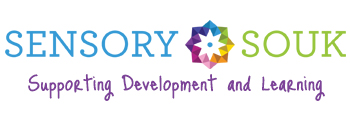What is Autism?
This is an easy-to-understand introduction to autism. There isn't 1 type of autism but a range or spectrum with symptoms including "challenges with social skills, repetitive behaviors, speech and nonverbal communication, as well as by unique strengths and differences."
Source: AutismSpeaks.org | What is Autism?
The following information is not meant to diagnose or treat and should not take the place of personal consultation, as appropriate, with a qualified healthcare professional.
What is autism spectrum disorder?
Autism, or autism spectrum disorder, refers to a range of conditions characterized by challenges with social skills, repetitive behaviors, speech and nonverbal communication, as well as by unique strengths and differences. We now know that there is not one autism but many types, caused by different combinations of genetic and environmental influences.
The term “spectrum” reflects the wide variation in challenges and strengths possessed by each person with autism.
Autism’s most-obvious signs tend to appear between 2 and 3 years of age. In some cases, it can be diagnosed as early as 18 months. Some developmental delays associated with autism can be identified and addressed even earlier. Autism Speaks urges parents with concerns to seek evaluation without delay, as early intervention can improve outcomes.
Some facts about autism
- The Centers for Disease Control and Prevention (CDC) estimates autism’s prevalence as 1 in 68 children in the United States. This includes 1 in 42 boys and 1 in 189 girls.
- An estimated 50,000 teens with autism become adults – and lose school-based autism services – each year.
- Around one third of people with autism remain nonverbal.
- Around one third of people with autism have an intellectual disability.
- Certain medical and mental health issues frequently accompany autism. They include gastrointestinal (GI) disorders, seizures, sleep disturbances, attention deficit and hyperactivity disorder (ADHD), anxiety and phobias.
Note: In 2013, the American Psychiatric Association merged four previously distinct diagnoses into one umbrella diagnosis of autism spectrum disorder (ASD). These included autistic disorder, childhood disintegrative disorder, pervasive developmental disorder-not otherwise specified (PDD-NOS) and Asperger syndrome.
To learn more, download the Autism Speaks First Concern to Action Tool Kit.
Also see:
- Step 1: Learn the signs
- Step 2: Screen your child
- Step 3: Access services
- Learn more about autism
- Tags: autism
- Raana Smith






